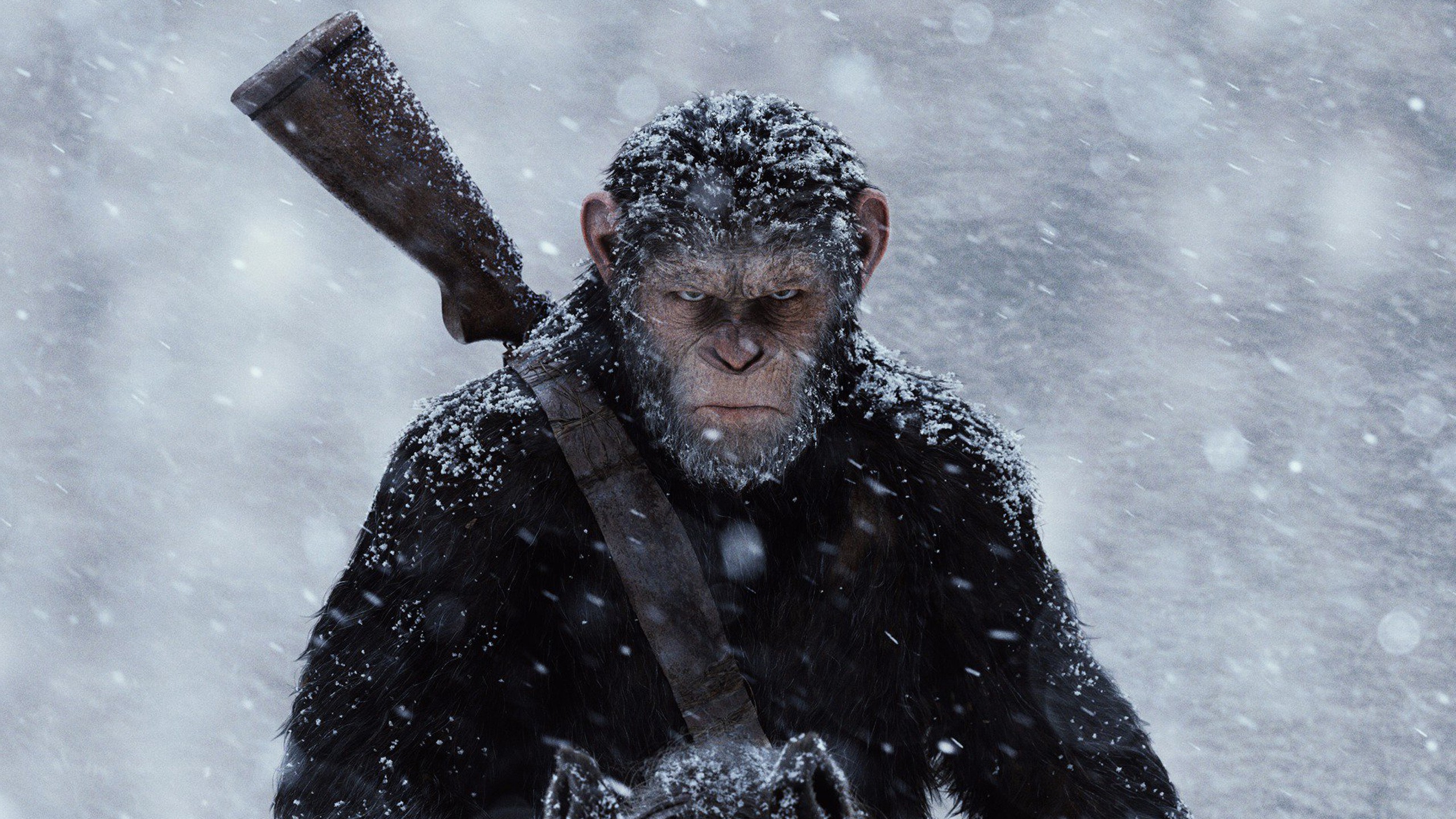Trilogies don’t often end well. Famous film trios, in particular, have consistently demonstrated a staggering inability to stick their respective landings with a proper third and final entry, historically leaving audiences with sour tastes in their mouths despite the overwhelming strength of the first two installments.
Occasionally a series will forget the advantages that formed the core of its identity in the first place, as “The Dark Knight Rises” did when it abandoned the grounded personal grit of “Batman Begins” and “The Dark Knight” in favor of nonsensical plot twists, illogical character motivations and a grandiose scale that resulted in more bombast than sharply crafted drama.
Some, like the infamous “Spider-Man 3,” bloat their narratives with unsustainable levels of subplots and characters that become impossible for the writers to juggle, much less provide a satisfactory conclusion for; while others, such as “The Godfather: Part 3,” feel contrived upon their very inception, more like a superfluous product designed to generate income rather than a necessary addition to the overarching story.
Prequel trilogies are particularly susceptible to this curse, as, by nature, the final film must smoothly transition to the beginning of the original series, which usually causes the ending of their final entries to feel predictable if not clumsy and awkwardly connected. Observe the eternally scrutinized “Star Wars” prequels for evidence of this trend.
Taking this into consideration, the tremendous success of the recent “War for the Planet of the Apes” comes as quite a shock, not simply because of its commercial achievements at the box office, but also due to the startling levels of cinematic quality the film exudes during its tense duration. Upon a brief glance, it would be easy to disregard the modern prequel trilogy to the classic “Planet of the Apes” as a silly, pointless summer blockbuster cash grab with its commercials that feature hyper-intelligent talking apes riding horses through flames while wielding machine guns and slaughtering humans for the purpose of taking over Earth.
It sounds absurd in concept and impossible in execution. However, this is merely a marketing angle to attract mass audiences who are typically more inclined to invest in theatrical releases that promise action regardless of storytelling substance, proven by the overwhelmingly lucrative “Fast and the Furious” and “Transformers” franchises.
In reality, the “Apes” prequels present a sophisticated, morally ambiguous tale of poignant melancholy in the face of coexistence, ironically a more realistic and touching human narrative than the vast majority of other high-profile summer releases featuring actual humans in recent memory. With “War,” the series has produced the best conclusion to a trilogy since 2010’s “Toy Story 3,” cementing its status against all expectations as one of the most complete film trilogies of all time, an extraordinary cinematic achievement all the way from the opening scene of 2011’s “Rise” to the final credits of the apes’ odyssey.
Almost immediately, “War” is able to captivate viewers into accepting and believing the fictional world of the apes by deliberately detailing their secluded society and showing that, despite being estranged from humans at this point in the story, these creatures epitomize human virtue and vice more than actual people do. Following a brief battle sequence establishing the harsh brutality between apes and humans, the audience is led on a tour of an ape society with its own set of rules, regulations and expectations, thus building an authentic world and society within the film that is foreign to viewers but still remains believable.
The apes have their own hierarchy depending on intelligence, they’ve invented their own sign language for the majority of their population who don’t possess the gift of spoken word, they live on cliff-sides and riverbeds hidden away from the potential threat of violence indicating they desire peace and there are many apes who consider betraying their kind to the humans out of fear for personal safety.
The apes fall in love, they have families with unbreakable bonds akin to those of people and they’ve generated deeply rooted friendships with their peers through their shared torturous experiences throughout the previous two films. These small pieces of information may seem insignificant, but it’s vital to show these things when world building in fiction, as the small intricacies of a setting and society make the world believable and immersive.
Within ten minutes, the viewer is acutely aware of ape society, intellectually invested in its rules and status in the larger world and emotionally attached to the film’s main characters and their families. In other words, after the efficient prologue transpires the audience is pulled back into this world with keen interest and dedication, no meandering like in “Return of the Jedi” or “The Dark Knight Rises.” When the film starts, the viewer cares.
The wonderful thing about “War” and the previous two films in the trilogy, however, is not that the apes are some utopian society presented as an ideal to strive toward when juxtaposed with the cruelty and ugliness of humans, but that neither side of the conflict is inherently good or bad. Though the apes would technically be classified as the protagonists and the humans their obstacle, the dilemma they face is not a matter of heroism and evil, but of morally grey uncertainty, which is both realistic and more impactful when utilizing ethos in its grand overarching story.
These kinds of stories are particularly crucial in today’s world, which aggressively misguides people to polarizing extremes.
Both parties are struggling for survival, to keep their races alive in a hostile world, and, as such, everyone in the film has their own ethical code for how to accomplish this task. The protagonists strive for coexistence, but that ideal isn’t solely restricted to the apes, as many of the main human characters are also seeking a peaceful arrangement with their simian counterparts and are willing to listen to and understand a world completely foreign to them.
Alternatively, the villains of the franchise are those insatiably desiring survival by lashing out with violence and murder, many of which are apes themselves. The main antagonistic force of the series is an ape named Koba, an unstoppable hurricane of destruction who turns rogue in the second film, “Dawn,” and initiates war with the humans through manipulation and killing. Though he’s absent for most of “War,” his presence is still felt by apes of similar philosophy who have betrayed their society and are working to continue what he started.
Though a narrative of heroes and villains would likely depict the apes as a beacon of good and the humans as irredeemably evil, here there are humans who are genuinely understanding people and apes that are more sinister. There are no inherent truths here, only ambiguity, which constructs a multi-layered story with complex motivations and morals that more accurately represent conflict in the real world. It’s not a simple summer blockbuster of protagonists and antagonists, it’s a human story of emotional volatility.
These kinds of stories are particularly crucial in today’s world, which aggressively misguides people to polarizing extremes. Unprecedentedly partisan political structures constantly depict the respective opposing side as cancerous heathens who should be purged from the democratic model. Spikes in racism, sexism and homophobia label entire groups of people under one spiteful umbrella when in reality people need to be judged as individuals, as it’s illogical to classify everyone in a certain demographic as being the same. Even casual arguments on the internet commonly devolve into hateful rhetoric shunning any counterpoint as lunacy spouted from imbeciles.
Narratives like the “Apes” trilogy that firmly understand the intricate nuance of human thought and the ambiguity of one’s morality are vital to experience in an age where everyone believes themselves to be correct while insinuating that any discourse suggesting the opposite must be antagonistic drivel. “War” and the “Apes” films are important because they understand the folly of absolutes in a reality that lends itself to ambivalence. If more people watched these films and made a concerted effort to understand the ethical complexity of the trilogy’s characters, maybe they could start to gleam some valuable insight as to how grey the world is no matter how much they prefer to see black and white.
Of course, a main character in such a story must tread this moral line carefully, never ascending beyond their counterparts to a status of ultimate good while avoiding plummeting into the darkness of malicious hate. Without this key element, the series would crumble. In this regard, the film’s main character, Caesar, is a remarkable achievement.
Brought to life marvelously by motion capture revolutionaire Andy Serkis of “Lord of the Rings” fame, Caesar is the perfect example of a character who strives to achieve peace and order for all creatures but who struggles with temptation, nearly acting on individual spite when his ideal inevitably turns sour. After Koba demolished any progress in peace accords Caesar potentially made in the first two films, the latter gradually becomes fueled with fiery rage following a particularly tragic turn of events near the beginning of “War,” slowly descending into the former’s mindset as the film progresses.
The primary character intrigue of “War” culminates from exploring Caesar’s inner conflict of maintaining peace while consciously acting on his anger, and it’s this desire for emotional balance over purely grasping for moral good that makes him such a complex protagonist. He is written with more raw humanity than any other main character in any significantly budgeted summer blockbuster film in recent memory; despite his ape exterior, Caesar feels like a real person.
Much of this is helped by Serkis’ excellent portrayal, almost certainly worthy of Oscar consideration for Best Actor, though he inevitably won’t receive it due to the Academy’s archaic rules against motion capture performances and general tendency to avoid summer blockbusters. Still, though his portrayal of Gollum in the “Lord of the Rings” trilogy is certainly the more iconic role due to its harrowing eccentricity, Serkis has done his best acting work to date with Caesar. A bold claim, but a fair one.
“War” brings perfect closure to a phenomenal trilogy in ways that few other final entries have ever managed to do, solidifying the “Apes” prequels as one of the finest, most consistently great and complete cinematic trilogies to ever be produced, alongside “Lord of the Rings” and “Toy Story.” One wouldn’t expect a series with such an outlandish premise to achieve such extraordinary thematic heights or accomplish such a sophisticated, mature human narrative, but the “Apes” series has thoroughly shattered any expectations to create something beautiful.
In a contemporary world in which humanity seems to be slipping by the day, it is a quintessential viewing experience and a game changer for summer blockbusters.

















